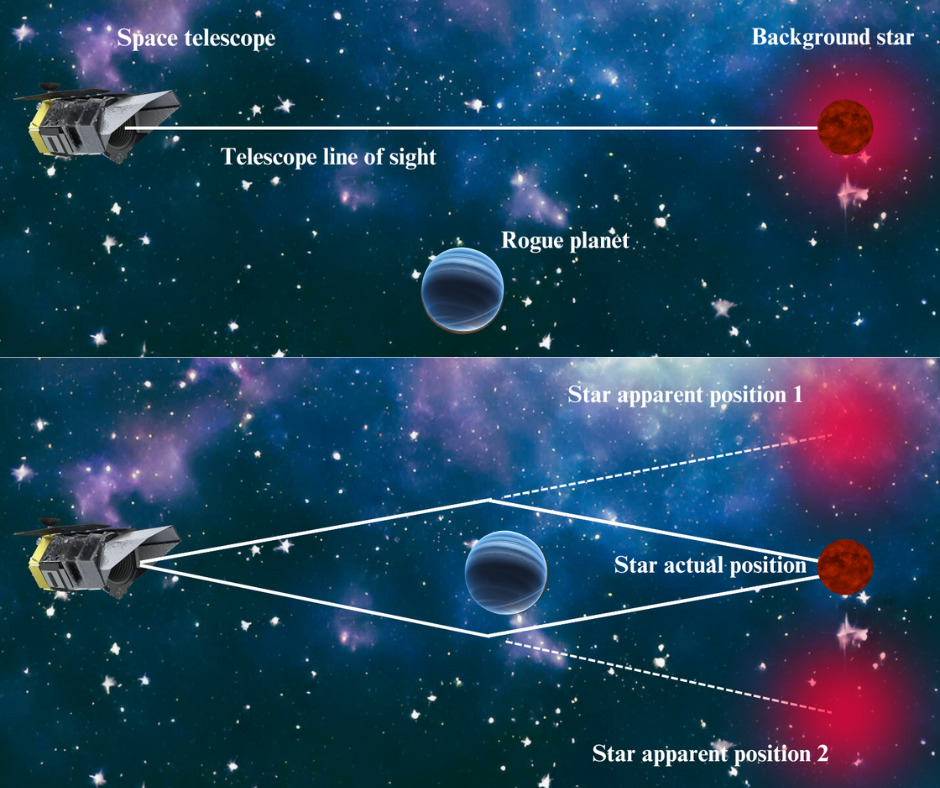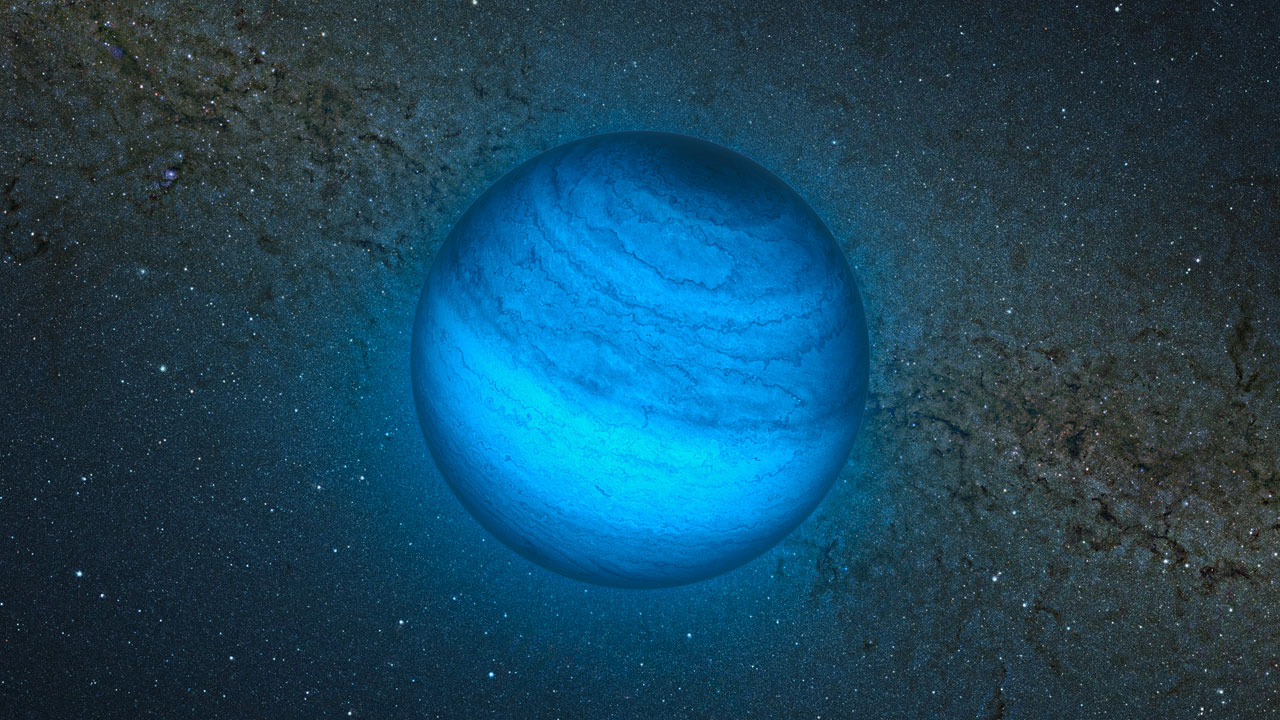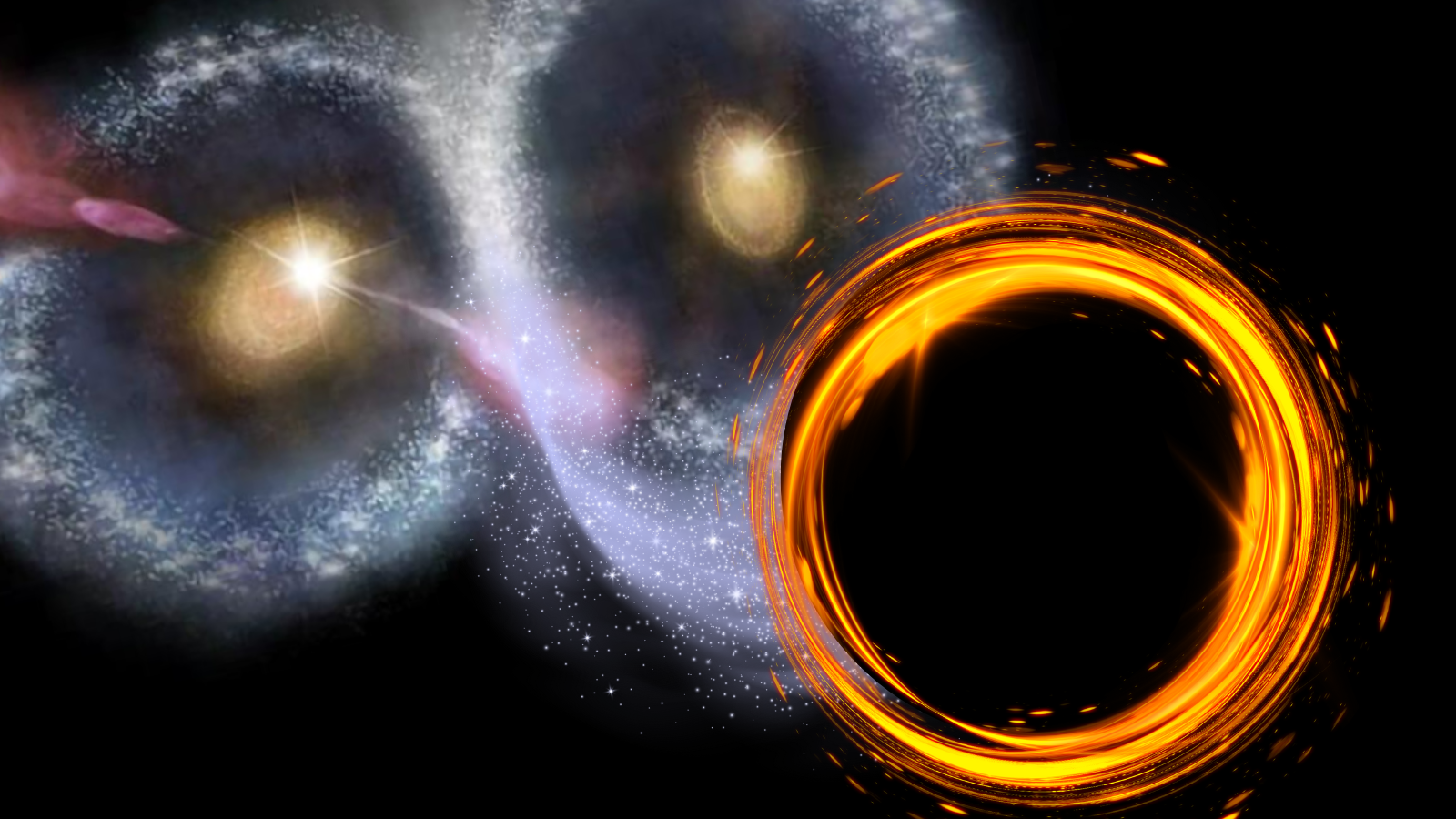Hubble Space Telescope spots rogue planet with a little help from Einstein: 'It was a lucky break'
"This discovery was partly serendipity! But, we believe there are many more such opportunities hidden in Hubble data."

Astronomers discovered a new rogue planet lurking in archival data gathered by the Hubble Space Telescope, and the find is thanks to a little serendipity — and a little help from the genius himself, Albert Einstein.
Rogue, or "free-floating," planets are worlds that don't orbit a star. They earn their rogue status when they are ejected from their home systems due to interactions with their sibling planets or via gravitational upheaval caused by passing stars.
The most successful way of detecting an extrasolar planet, or exoplanet, in general is waiting until it crosses, or "transits," the face of its parent star. Being cosmic orphans without a stellar parent, however, rogue planets can't be detected in this way. Fortunately, a phenomenon first predicted by Einstein in 1915 offers a way to spot these rogue worlds.
"Free-floating planets, unlike most known exoplanets, don't orbit any star. They drift alone through the galaxy, in complete darkness, with no sun to illuminate them. That makes them impossible to detect using traditional planet-detection techniques, which rely on light from a host star," Przemek Mroz, study team member and a professor at the University of Warsaw, told Space.com. "To find these elusive objects, we use a technique called gravitational microlensing."
How Einstein became a rogue planet hunter
Einstein's 1915 theory of gravity, general relativity, suggests that objects with mass cause the very fabric of space to "warp." The bigger the mass, the greater the warp and thus the stronger the gravity that arises from the warp.
Gravitational lensing arises when light from a background source passes by the warp. Its path gets curved. This can amplify that background source, an effect that astronomers use with Hubble and the James Webb Space Telescope (JWST) to study extremely distant galaxies that would usually be too faint to see.
"This phenomenon occurs when a massive object, the lens, passes in front of a distant star (the source), magnifying the star's light due to the lens's gravity," Mroz explained. "The beauty of microlensing is that it works even if the lensing object emits no light at all.
Breaking space news, the latest updates on rocket launches, skywatching events and more!
"During microlensing events, the source star gets temporarily magnified. We can estimate the mass of the lensing object by measuring the duration and other properties of the event."
Mroz added that when microlensing events are generated by passing rogue planets, they are usually very short, lasting less than a day.
The particular microlensing event the team studied to reveal this new rogue world is designated OGLE-2023-BLG-0524 and was observed by Hubble on May 22, 2023, remaining buried in data from the space telescope.
"It was discovered in the direction of the Galactic bulge by the Optical Gravitational Lensing Experiment [OGLE] survey, and independently observed by the Korea Microlensing Telescope Network [KMTNet]," Mroz said. "The Einstein timescale of the event was just eight hours, making it one of the shortest microlensing events on record."
Based on the microlensing event’s properties, Mroz and colleagues were able to estimate that the lensing body object could be either a Neptune-mass planet located in the Milky Way's galactic disk, around 15,000 light-years away. Alternatively, the rogue world could be a larger but more distant Saturn-mass object in the Milky Way's galactic bulge, roughly 23,000 light-years away.
"Both scenarios are consistent with the microlensing signal we observed," Mroz said.
Hunting for planets in Hubble's archives
One of the most important tasks that faced the team upon the discovery of the microlensing event OGLE-2023-BLG-0524 was determining that this was indeed caused by a rogue planet, and not by a planet associated with a star but on a wide orbit far from its stellar parent.
They reasoned that if the planet had a nearby host star, within 10 times the distance between Earth and the sun (10 AU), they would have likely seen a second, longer-lasting microlensing signal from the star. The researchers saw no such signature, so they could rule out that the planet had a close stellar companion.
However, if the planet orbits a star at a much wider separation, greater than 10 AU, the odds of detecting the host star are much lower.
"This means we can’t fully rule out the wide-orbit scenario, but here's where it gets interesting," Mroz said. "Because the lens and the background star are slowly moving relative to each other, they will eventually separate in the sky.
"If we detect light from the lensing object at that point, we'll know it’s not completely free-floating."
Unfortunately, Mroz explained that the distance between the planet and the background star means their relative motion appears incredibly small, about 5 milliarcseconds per year.
"It will take at least a decade before we can hope to resolve them with current instruments, such as the Hubble Space Telescope or large ground-based telescopes," Mroz said.
Hubble was particularly useful in this rogue planet hunt because the region of the sky that hosts the microlensing event was observed by the long-serving space telescope way back in 1997. That's over 25 years before the microlensing event.
"That gave us a unique opportunity to test whether there might be a star associated with the lens," Mroz said. "According to our model, by 1997, the lens and source should have been separated by 0.13 arcseconds. That's tiny, but within Hubble's capabilities. If the lens were a bright star, we would have seen it in those old images. But we didn't."
The absence of detectable light at the expected lens position told the team that any potential host star would have to be very faint.
"Depending on the stellar population model we use, that rules out around 25% to 48% of possible companion stars," Mroz said. "That pushes us further toward the conclusion that this may truly be a free-floating planet."
Mroz explained that OGLE-2023-BLG-0524 was discovered by team member Mateusz Kapusta by chance while the team was following up on microlensing events.
"This discovery was partly serendipity!" Mroz said. "It was a lucky break, but we believe there are many more such opportunities hidden in the data.
"Microlensing events occur all the time in dense stellar fields, and many of those fields have been observed by Hubble in the past. That means there could be more interesting events waiting to be discovered in the Hubble data."
The team's research is available as a preprint on the paper repository arXiv.

Robert Lea is a science journalist in the U.K. whose articles have been published in Physics World, New Scientist, Astronomy Magazine, All About Space, Newsweek and ZME Science. He also writes about science communication for Elsevier and the European Journal of Physics. Rob holds a bachelor of science degree in physics and astronomy from the U.K.’s Open University. Follow him on Twitter @sciencef1rst.
You must confirm your public display name before commenting
Please logout and then login again, you will then be prompted to enter your display name.


